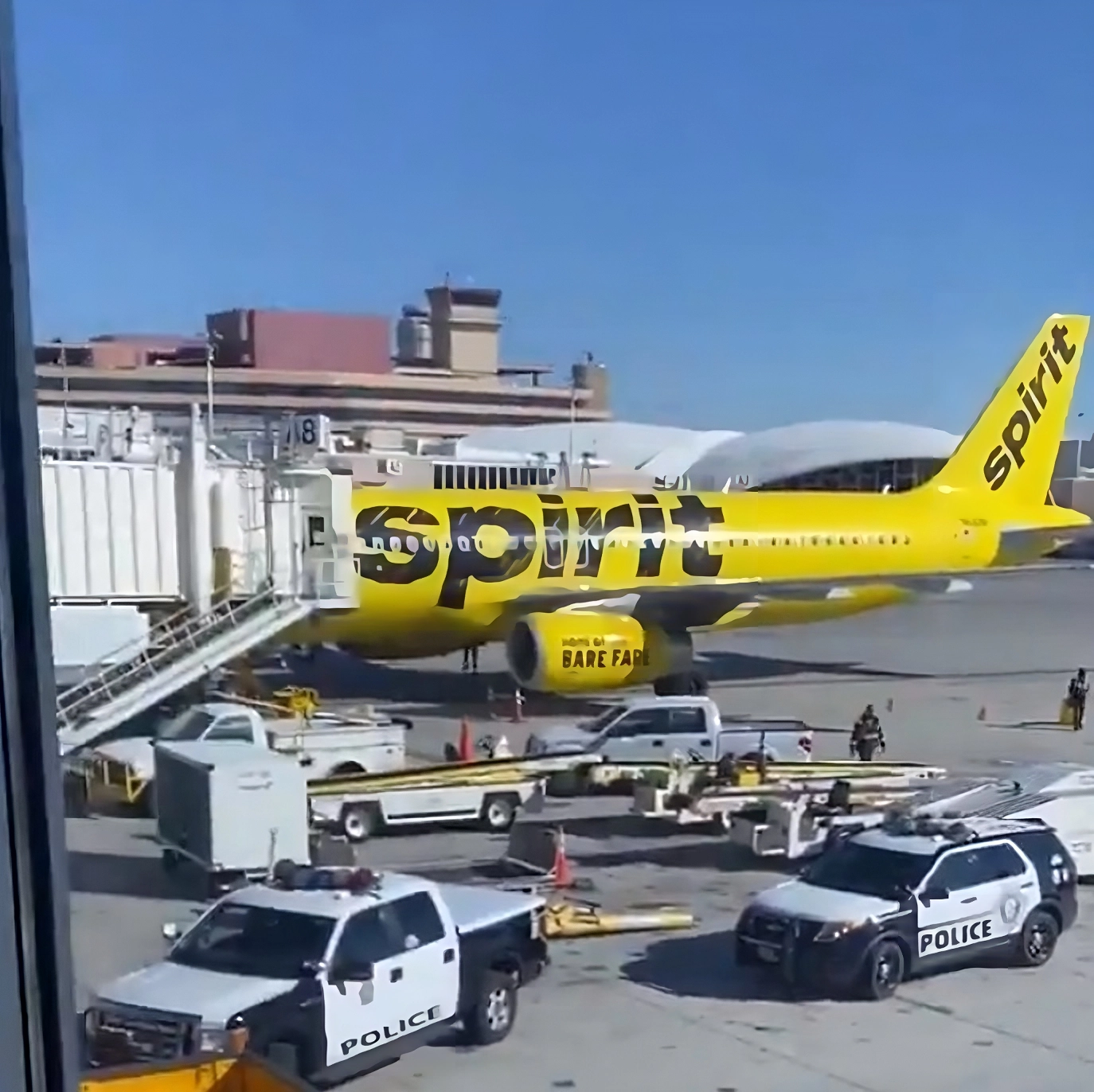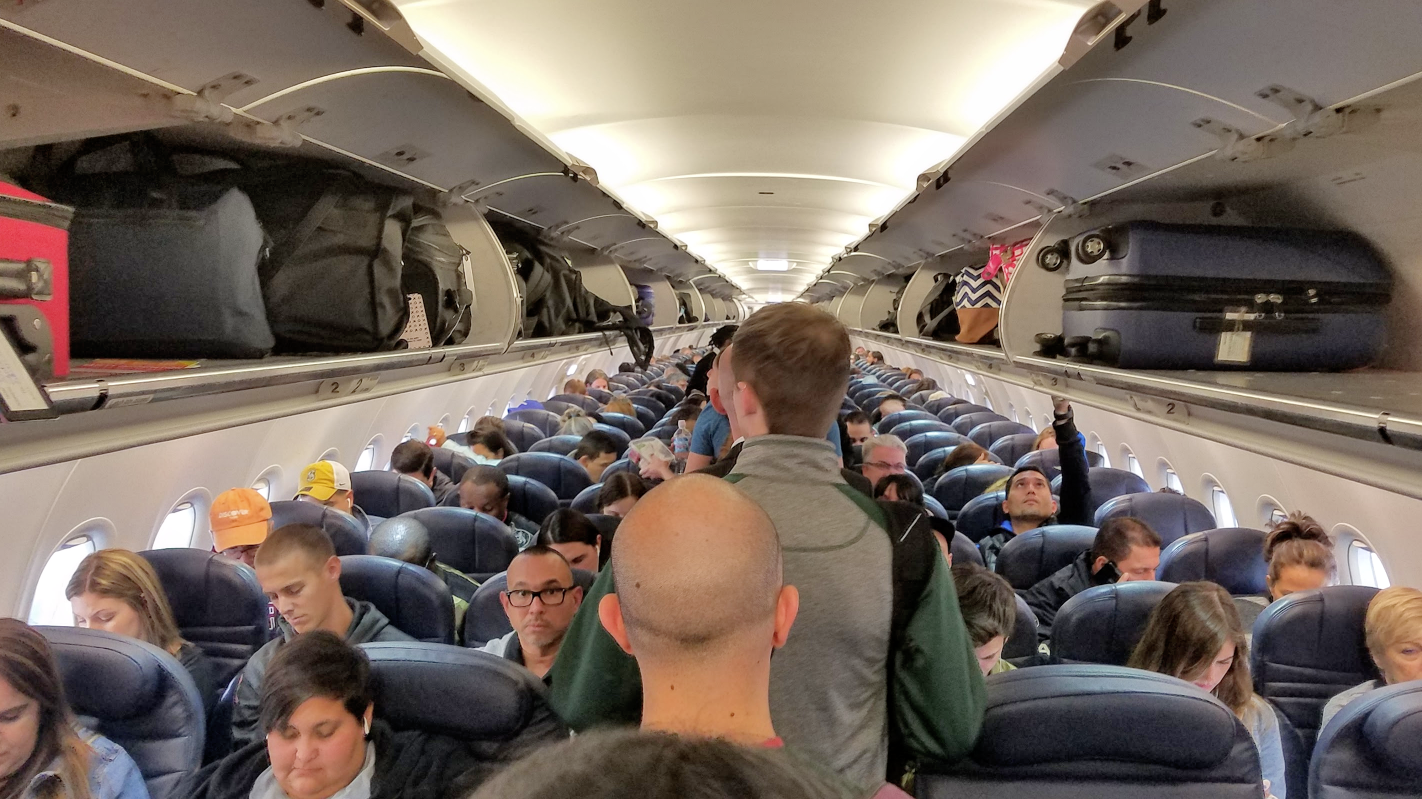A week ago I wrote to expect Spirit Airlines to file bankruptcy mere months after emerging from bankruptcy. This move should surprise no one.
- I wrote 9 months ago, when they filed for bankruptcy last time, that their turnaround plan made no sense. They weren’t really cutting costs, outside of restructuring debt. And their plan was to spend money to become a different, more premium, airline – under the same Spirit brand. In other words, to become more like American Airlines and JetBlue but not as good.
- When they emerged from bankruptcy I wrote that a return to the courthouse could be just around the corner. The airline hadn’t solved the problems that led it into bankruptcy in the first place.
- Indeed, the carrier was forced several times to warn that it might not survive as a going concern. They’d burned up all of their available credit lines, and their credit card processor was holding back up to $3 million a day from ticket sales as a hedge against their ceasing operations.

Spirit was almost saved by JetBlue, but the Biden administration blocked that. They shouldn’t have rejected the lifeline that Frontier Airlines threw them earlier this year.

Fundamentally, though, the airline has seen its costs rise – and not just post-pandemic labor cost increases. They inauguarated a new four-building, 11-acre corporate campus last year. Spirit!
They can sell their aircraft order book. They don’t need as many planes anyway. They have coveted gates and slots in some congested airports. Their Fort Lauderdale operation has value (surely United would love it). So there’s still fire wood to burn here.

Some observers blame Pratt & Whitney engine issues that have grounded much of their fleet for long periods of time, but the truth is that the airline has tried to shrink even further, quickly, because so much of its flying was money-losing. They didn’t have profitable places to send those planes. So they’re probably better off with the fleet grounded, and monetary compensation from the engine manufacturer, than with airworthy planes.
Second quarter revenue of $1.02 billion was down more than 20% year-or-year. Their net loss was $246 million for the quarter, with an operating margin of -18.1% (a substantial deterioration from the prior year’s second quarter -11.9%).
Spirit Airlines was once the envy of the airline industry. It had the best margins and generated a strong return, making air travel available to more people and stimulating demand by passengers who weren’t flying otherwise. They had lower costs than competitors, lower fares, and customers adapted themselves to Spirit’s business model to save money.
However, consumer preferences changed and the pandemic exacerbated this. Passengers increasingly wanted a premium product that Spirit wasn’t positioned to sell. It had one of the most toxic brands in any industry. And they began losing their cost advantage.
What would we do without Spirit Airlines, though? They’ve much improved their operation. They really aren’t a bad airline! And they help drive down prices across the industry. Plus they’re an endless source of entertainment. So hopefully there’s an opportunity again for a Frontier deal – I’d much prefer to see a strong ultra-low cost carrier than to see United pick up Fort Lauderdale and Delta trawl for more assets at congested airports.
I do wonder if part of any turnaround plan, though, really ought to be a new brand?


@ Gary — They should change names to ValuJet. No on remembers anymore. Or maybe go woke with AirTranny. Or may go MAGA with DiaperAir?
GAWD…can you imagine a combined Frontier and Spirit airline? Look at the passengers and employees they have now! Can you imagine what those gate and flight conflicts might act like? YIKES! That would put the combination so low in customer service and morale that anyone connected to the “merger” would have to look UP to see whale crap on the bottom of the ocean. I find it somewhat comical and ironic that the above picture shows two police cars outside of the Spirit jet. I guess they are there “just in case”?
So when will Spirit give up the ghost?
Chapter 22: yes, there’s no end to this endless source of entertainment!
We need to get people who belong on the bus off of airlines. Simple as that
Thank you Biden administration.and Merrick Garland. You saved the country from the disaster that a Spirit Jet Blue merger would have caused but for 3 years didn’t lift a finger to go after Donald Trump when you had the chance to.
Hopefully the lesson learned by other airlines, is if you put the cheapest most uncomfortable seats in a plane, and nickle and dime people to death, while creating a toxic passenger environment by encouraging ongoing hooliganism…. NOBODY will really care about what happens to this brand as another air carrier will quickly step in to backfill their cuts.
I hate to say good riddance, but air carriers, charter carriers, and even the cheapest of the inexperience ULCC’s can do a far better job than what Spirits leadership team has done to air travel over the course of their years they were somewhat of a fleeting success.
The DOJ saved B6 from ending up in chapter 11 as well by this point; far more negative impacts would be occurring if NK and B6 – even if under one company – were in chapter 11 or heading there.
and Airbus very likely does not allow airlines to sell their delivery positions or reassign orders; Airbus and Pratt and Whitney would both love to have a couple hundred orders back off of its order book.
American Airlines should watch closely because they may follow. Most USA airlines do not make very much money on actual air operations, if any at all. They make it on other things, such as credit cards and mileage plans. Spirit is not strong in those other revenue streams. If Spirit is going to get delivery of new airplanes, I wonder if they can resell them for more than they buy them for. After all, a lot of companies would like new airplanes earlier than they are scheduled to get them.
Bah! I honestly had never heard of it referred to as that way, repetitive chapter 11 filings become a 22… so wager on there being a 33, soon?
@1990:
Maybe Spirit can add their new 11 acre campus to make it to magic 33.
Seriously, only about 15% of Chapter 11 cases have to be refiled and thus achieve 22.status because their initial plan doesn’t work. There are typically three reasons for a Chapter 22 following a Chapter 11:
1) At the end of Chapter 11 they remain undercapitalized without the $$ needed to sustain operations. or,
2) They haven’t fixed the underlying problems that led them to Chapter 11 in the first place. or,
3) Market conditions changed for the worse since the Chapter 11 was filed.
Reportedly, Spirit has all three problems.
Under a Chapter 22 case, the court applies even more scrutiny and oversight than with the Chapter 11 because the debtor has lost credibility. So Spirit can look forward to less freedom and more oversight in management decisions. The wants of the customers rank below the rights of the creditors (first) and then the shareholders (second). It’s going to be a very difficult time for Spirit because they will have to come up with a realistic plan that solves all three of the above listed problems. I wish them the best of luck with that.
@InLA — ‘This guy bankruptcies!’ The code is still better than literal debtors prisons or mafia violence. Will be fascinating to watch as this unfolds. However it goes, I feel for the workers, who may also have to ‘get in line.’ At least the attorneys (and trustees) always get paid.
Biden built that.
I’m guessing Spirit is positioning itself to be acquired, either in whole or part. It’ll be interesting to see what survives (if anything), what gets sold off, and what gets parted out. I’m thinking jetBlue might have at least as much interest in Fort Lauderdale as United, and regulators might want to preserve a “low cost” competitor there to counter American at Miami.
Significantly shrinking an airline doesn’t work. The ULCC business model doesn’t work on any kind of scale. Unless the government steps in with savior money Spirit will sell off assets in a bankruptcy sale. Frontier won’t survive either. No business can sell it’s product or service under cost without additional revenue streams and stay in business. Simple math.
@Mantis — Let’s see… founded 1983… in Florida… struggling in 2025… yup, the Autopen did this!
I’m still holding on hope for a merger with Dollar General. Wouldn’t even have to repaint the planes!
They could even put up a few poorly stocked shelves of junk food and off-brand cleaning supplies at the gates.
Curious how many people who are trash-talking Spirit have actually flown it. Living in FLL I’ve started flying them a bit this year (since they added first class seating). They’re not my go-to, but they are a fairly good back-up when schedule or Dl / UA ops are on the struggle bus. Honestly, I’ll take Spirit over AA.
One of the only reasons Spirit (and Frontier, JetBlue and the other smaller carriers) are struggling is because they’re not large enough to generate the revenue from credit card and other deals the big four / five can. Take those deals away and no one is making money on core operations. Know that that is called? A failed business model.
Without significant increases in base fares and scaled back capacity, no one is going to make money from flying their planes. Silver was the first shoe to drop in this wave. Sprit will be next, Frontier and JetBlue will follow…along with Avelo. This will be bad for consumers and tertiary markets, but good for the sustainability of the industry overall.
Parker
a model where legacy/network carriers earn their profits from credit cards is not a failure but a model that is intended to squeeze the low cost carriers that cannot operate w/ that business model.
AA, DL and UA can and do offer fares competitive w/ the ULCCs and offer a better experience including more robust schedules.
Add on that DL led the industry in increasing pay post covid and it is clear that the big 3 are doing all they can to squeeze the low cost competitors – and it is working.
given the high barriers to entry and the fact that NK will likely lose many of its employees when it forces through wage cuts – which it did not do in C11 because they knew they would lose people – the lowest fare sector of the US airline industry is in a tailspin and there is nothing that Washington or anyone else can do to stop it.
when the US airline industry was deregulated, there were no low cost carriers or they had a very small presence; the big 3 plus AS would love for it to return to that scenario.
WN is moving toward that direction which means that you will likely have 5 legacy or legacy-like network carriers in the US. that is more than enough for aggressive competition between them but w/ very little downward pressure on fares
@Tim Dunn when your core business does not provide the revenue to support long-term sustainability you have a failed business model. Just because you can prop it up through supplemental revenue for years while you “squeeze out the competition” doesn’t;t mean you have a good business model. It means you’re willing to lose money on the hopes eventually you can raise prices when there’s less competition. That’s called hope as a strategy.
IF Delta indicated their strategy was to create an ecosystem of products and affiliates intended to provide a menu of travel, financial and lifestyle services that would be one thing. But Delta and the others say their business is air travel…not all the other things. So, again, it’s either a failed business strategy or they are lying.
Parker
actually, DL is pretty clear that they are a high-end consumer brand; they do see themselves as more than just an airline. whether they are or not is up for their customers to decide but DL gets a far higher percentage of its revenue from non-transportation revenue than any other US airline.
and it is a strategy to price your core product at a price that squeezes your competitors while getting the revenue that matters from sources they can’t touch.
It’s how Kroger etc put the local milkman out of business.
@Parker — Big Front Seats are decent. When I was based in SoFla there were a few times where I preferred them for a unique routing (nonstop, instead of having to connect in ATL, CLT, IAD/EWR/ORD/IAH, etc.) or as you mentioned when IROPS ruined the other guys.
“raise prices when there’s less competition” oh, so the Amazon/Walmart approach, eh?
@1990 Chapter 22 is fifteen too many. Probably will see that soon.
Thanks Lina!
@Tim Dunn – the amount of yoga you must do to twist yourself into these knots must be rather expensive. Curious, are you on their payroll? Either you are or you’re blindly loyal.
If Delta and the other airlines cannot fund themselves off of their core business they have an unsustainable business model. You can twist it all you want, but they market themselves as an AIRLINE, not a high-end consumer brand.
And…while I like Delta…if they were a high-end consumer brand they would not:
1. Have outdated planes with dated interiors and industry-lagging seats and pitch.
2. Have lines into their premium lounges half-way down concourses.
3. Try to market international business class products that are behind the global competition.
4. Rank as low as they do in global airline rankings.
Delta is, at best, a 3.5 star airline. While best in the US, they are far from a high-end consumer brand to those of us who can afford and are accustomed to high-end consumer brands.